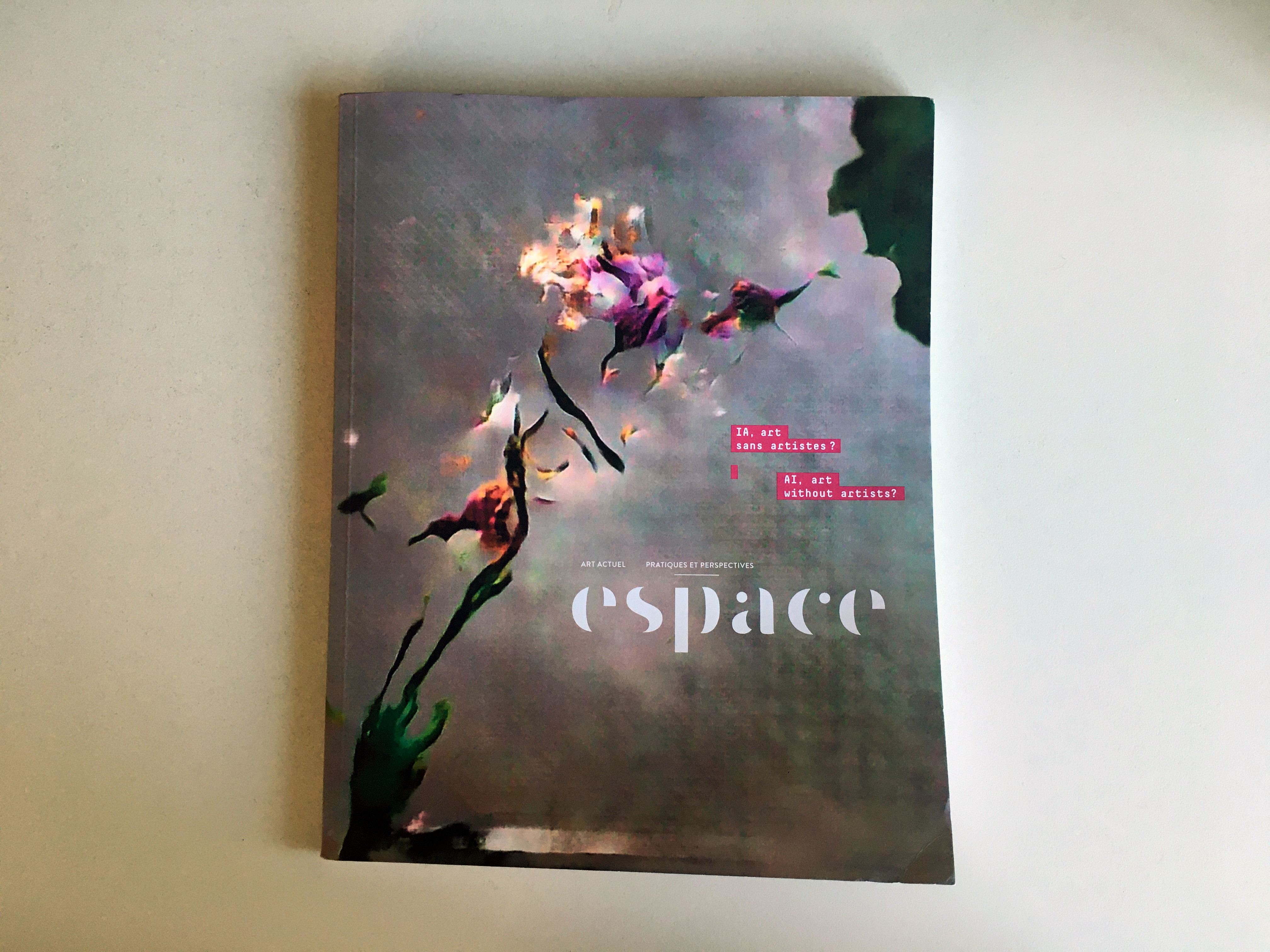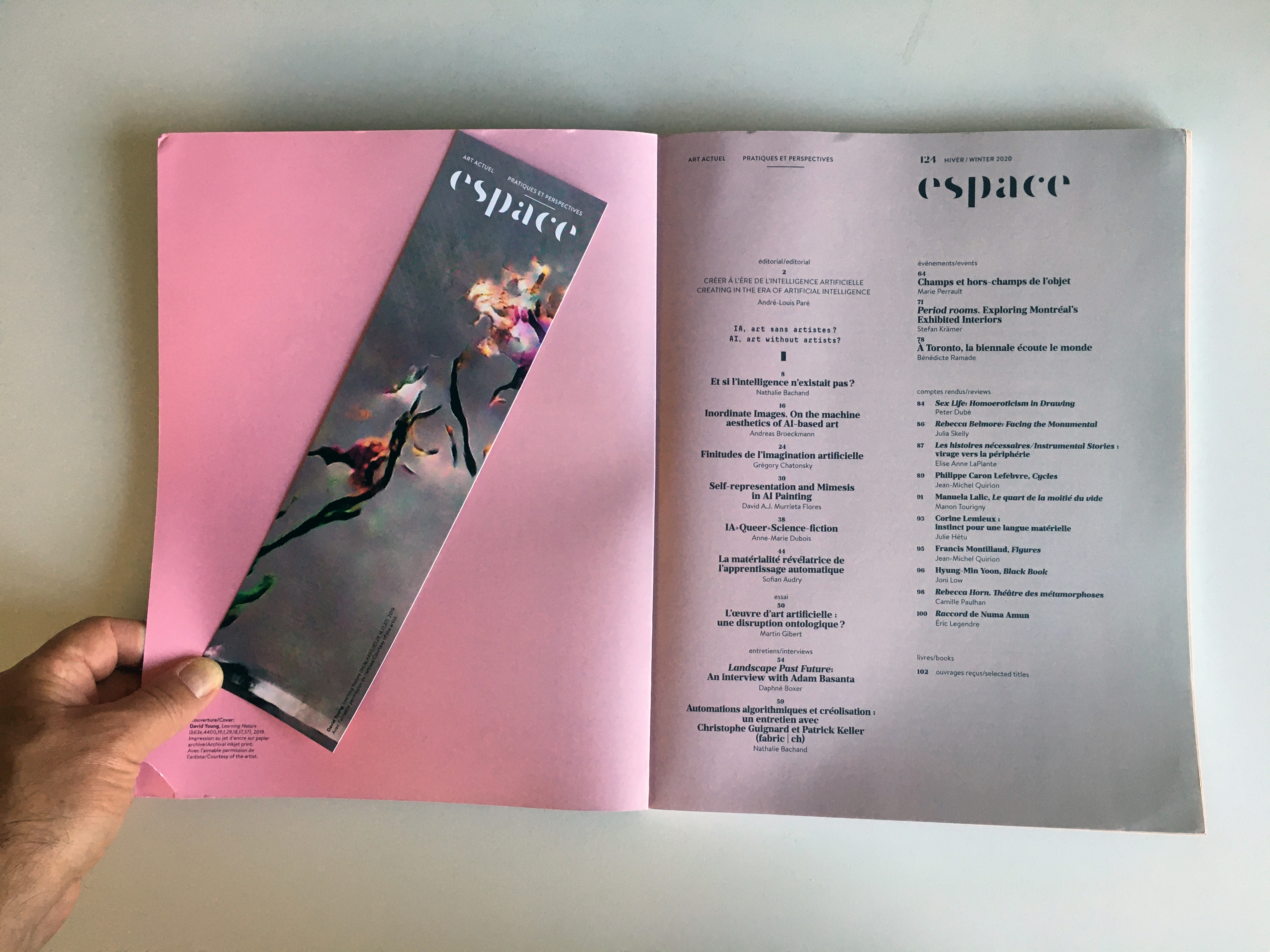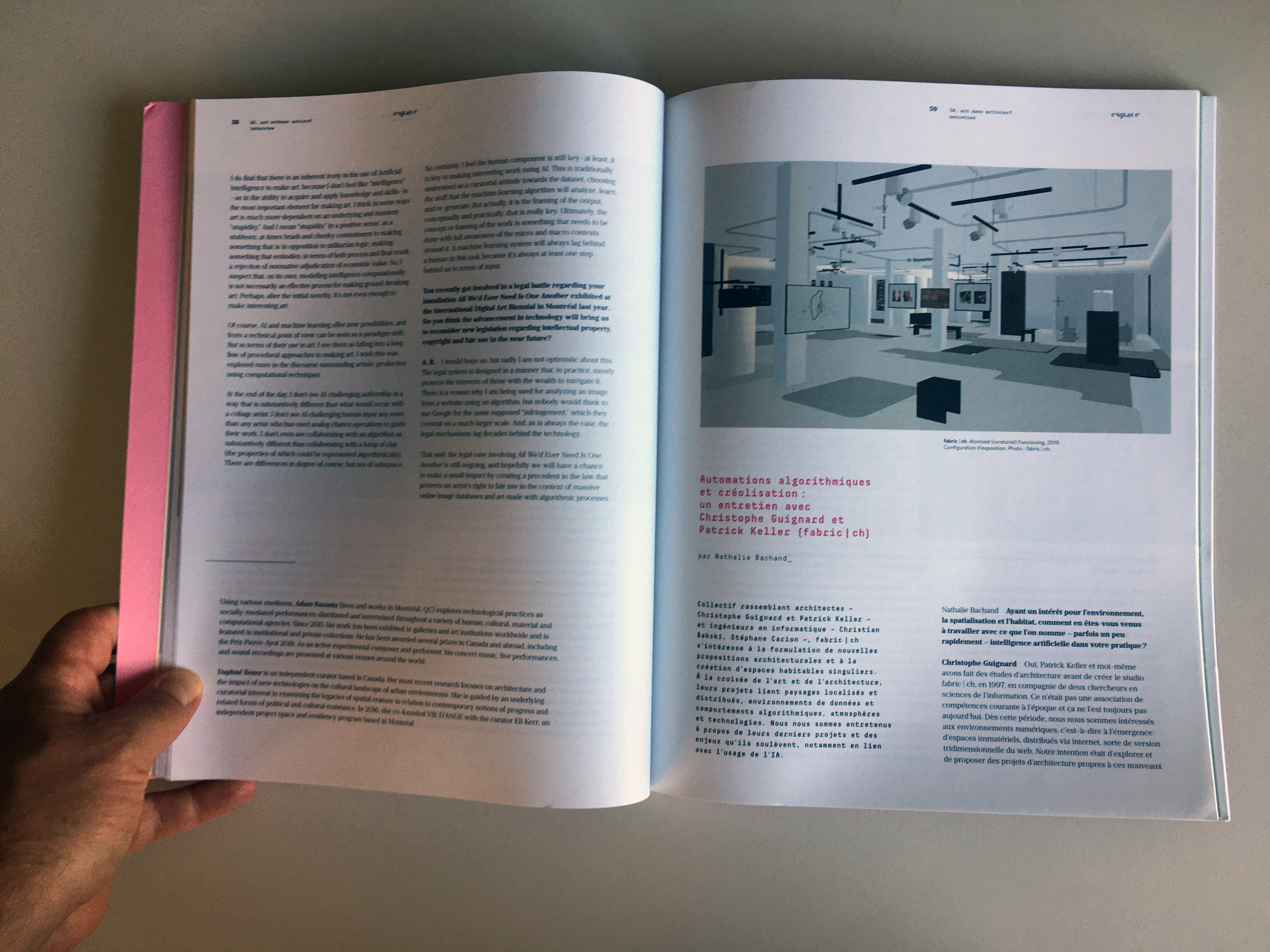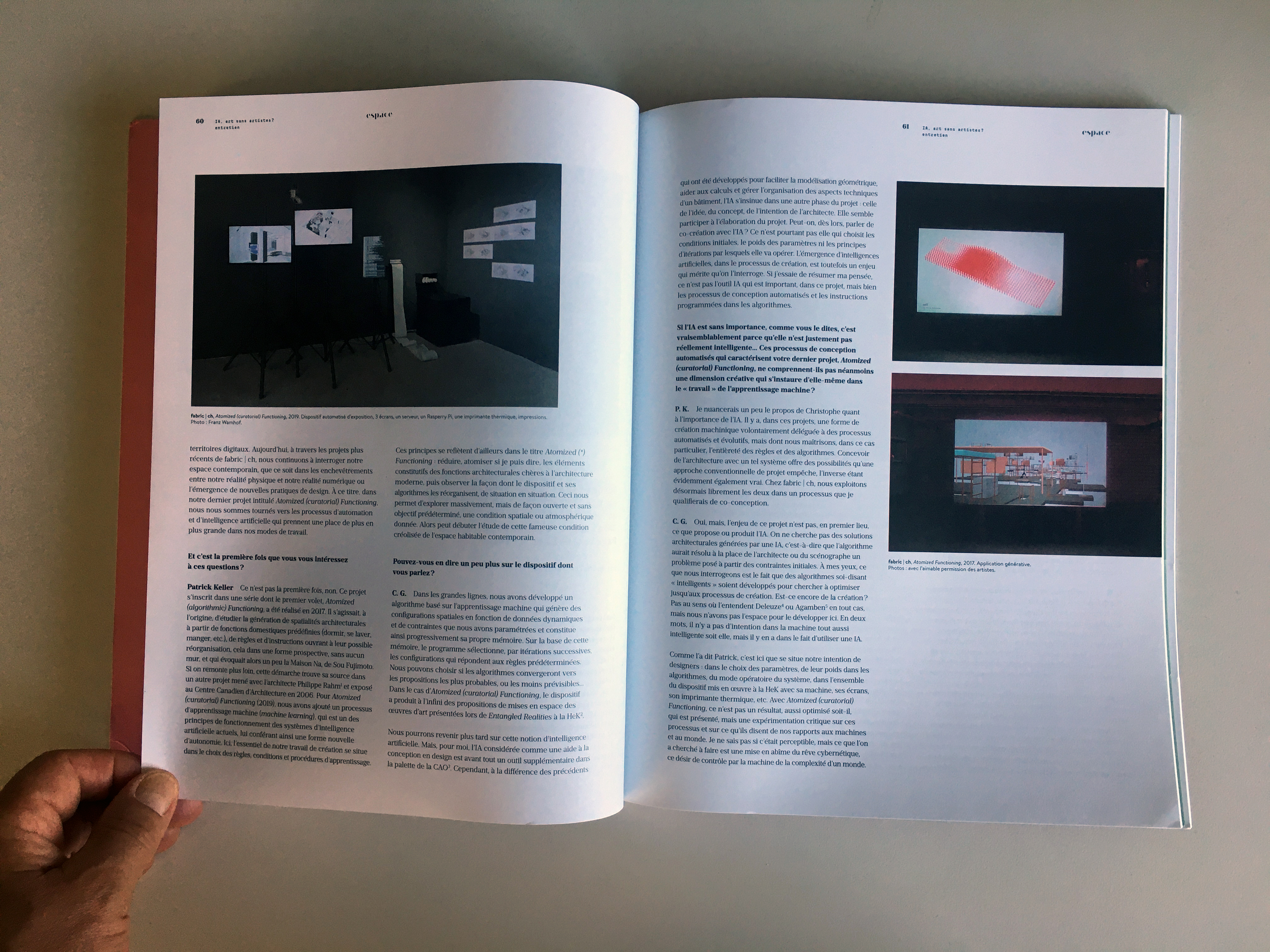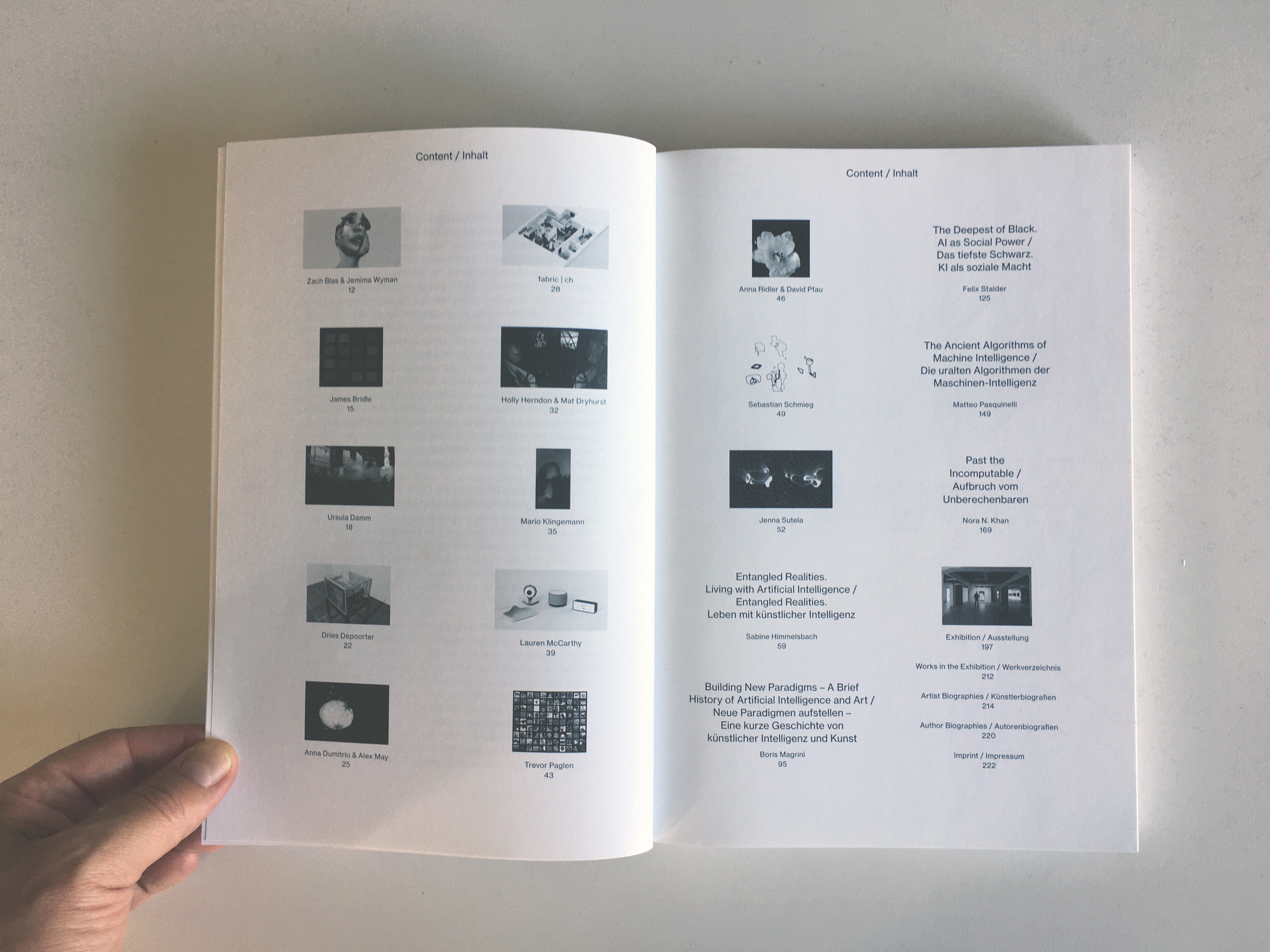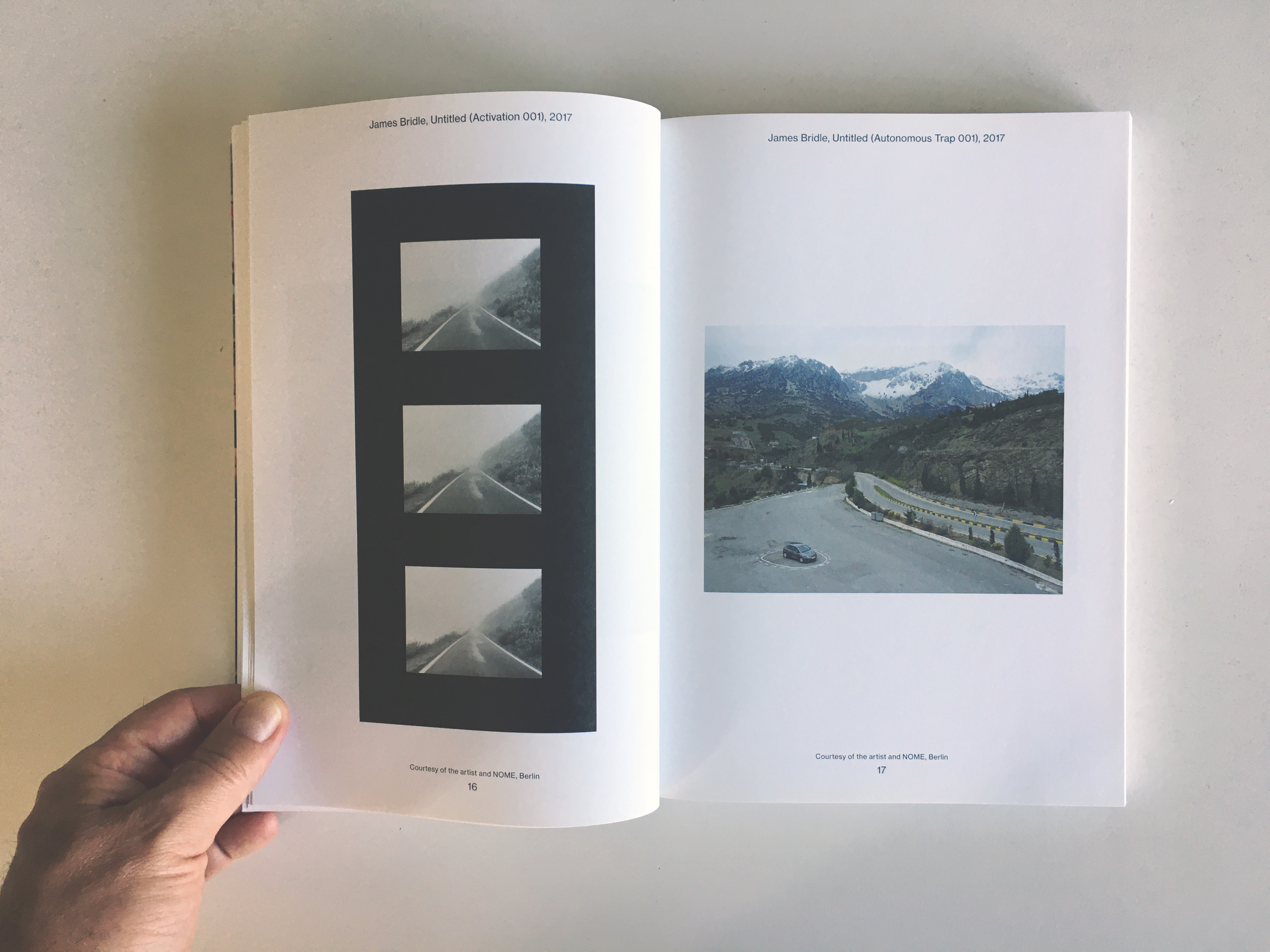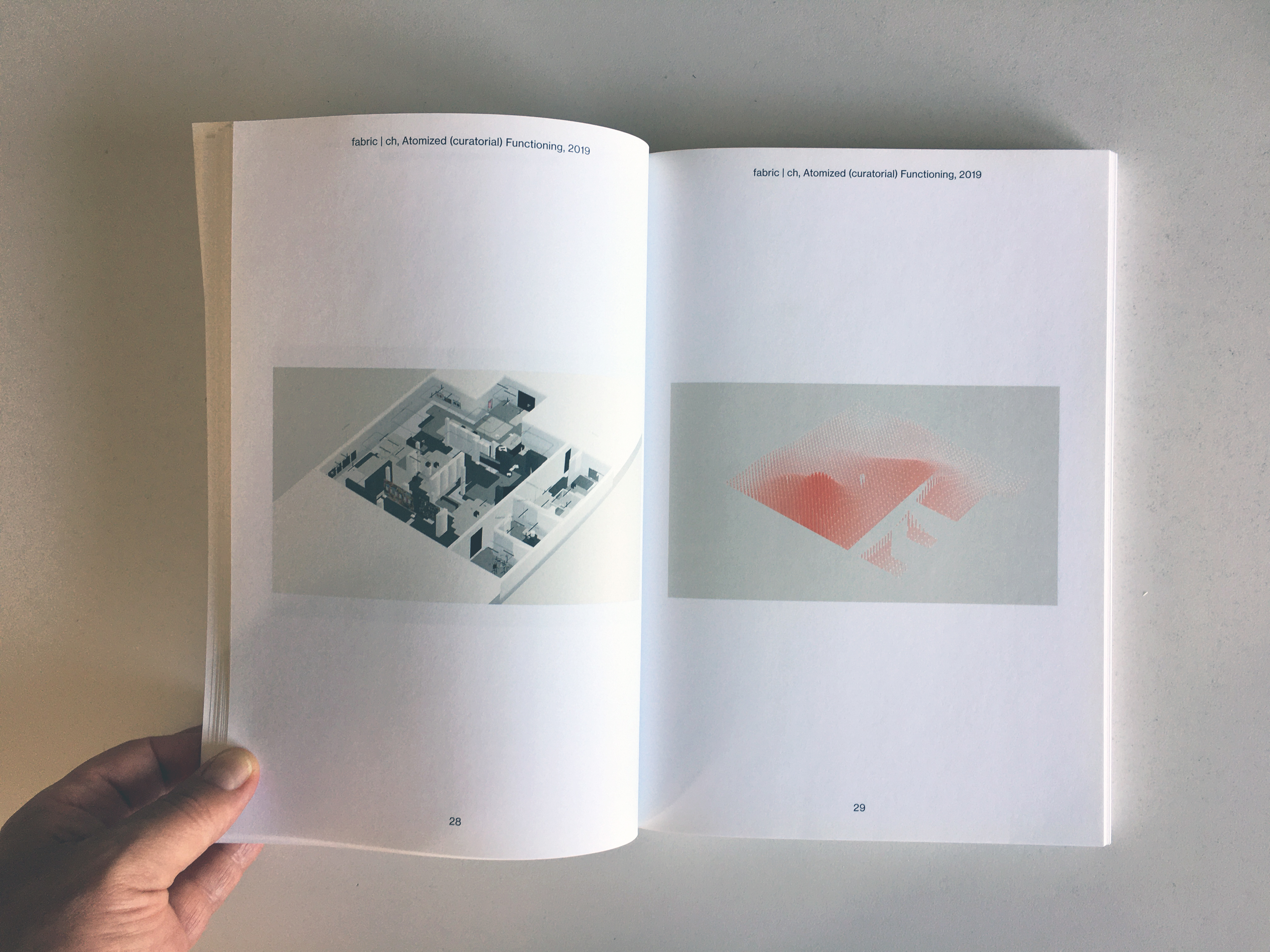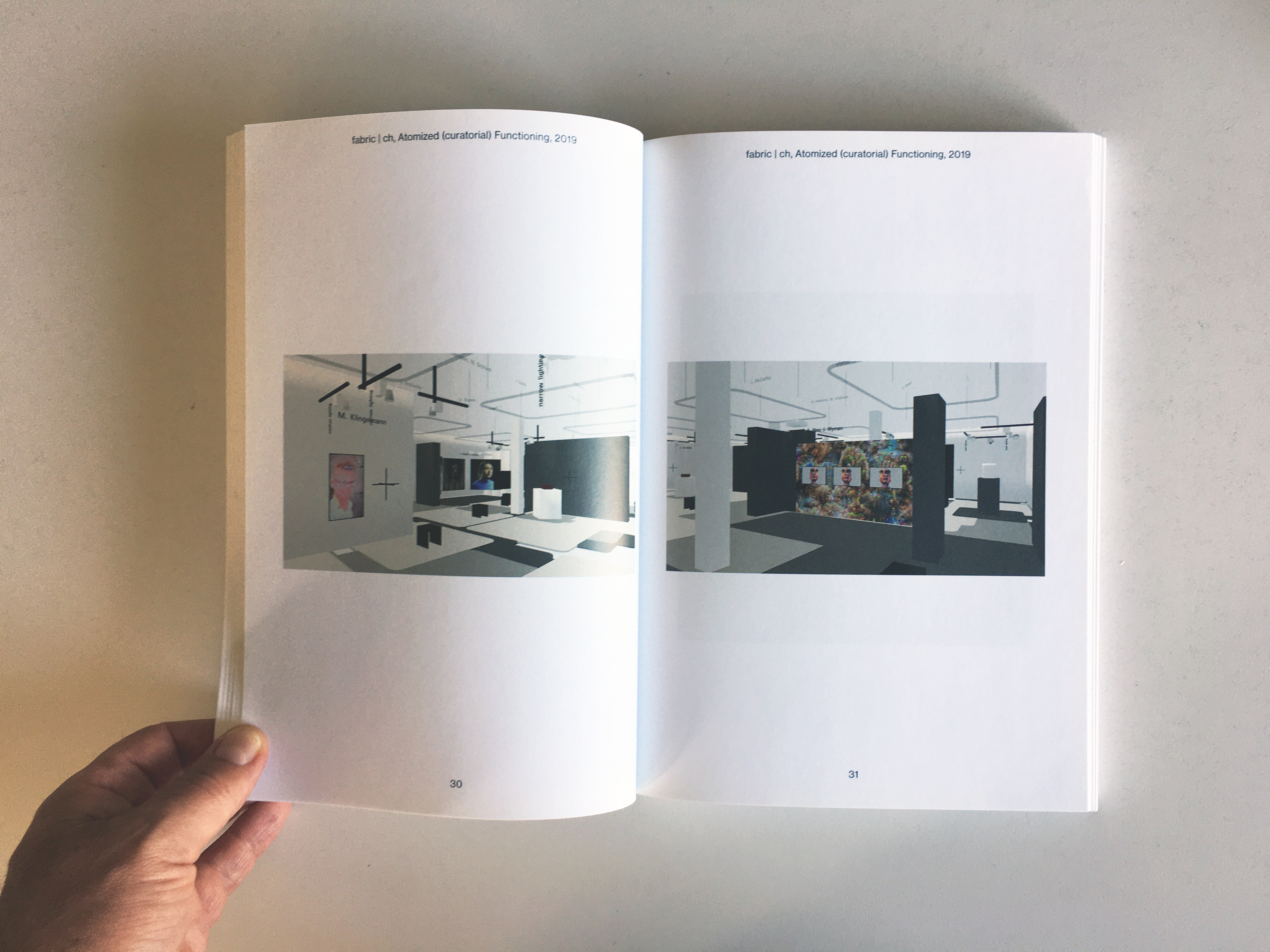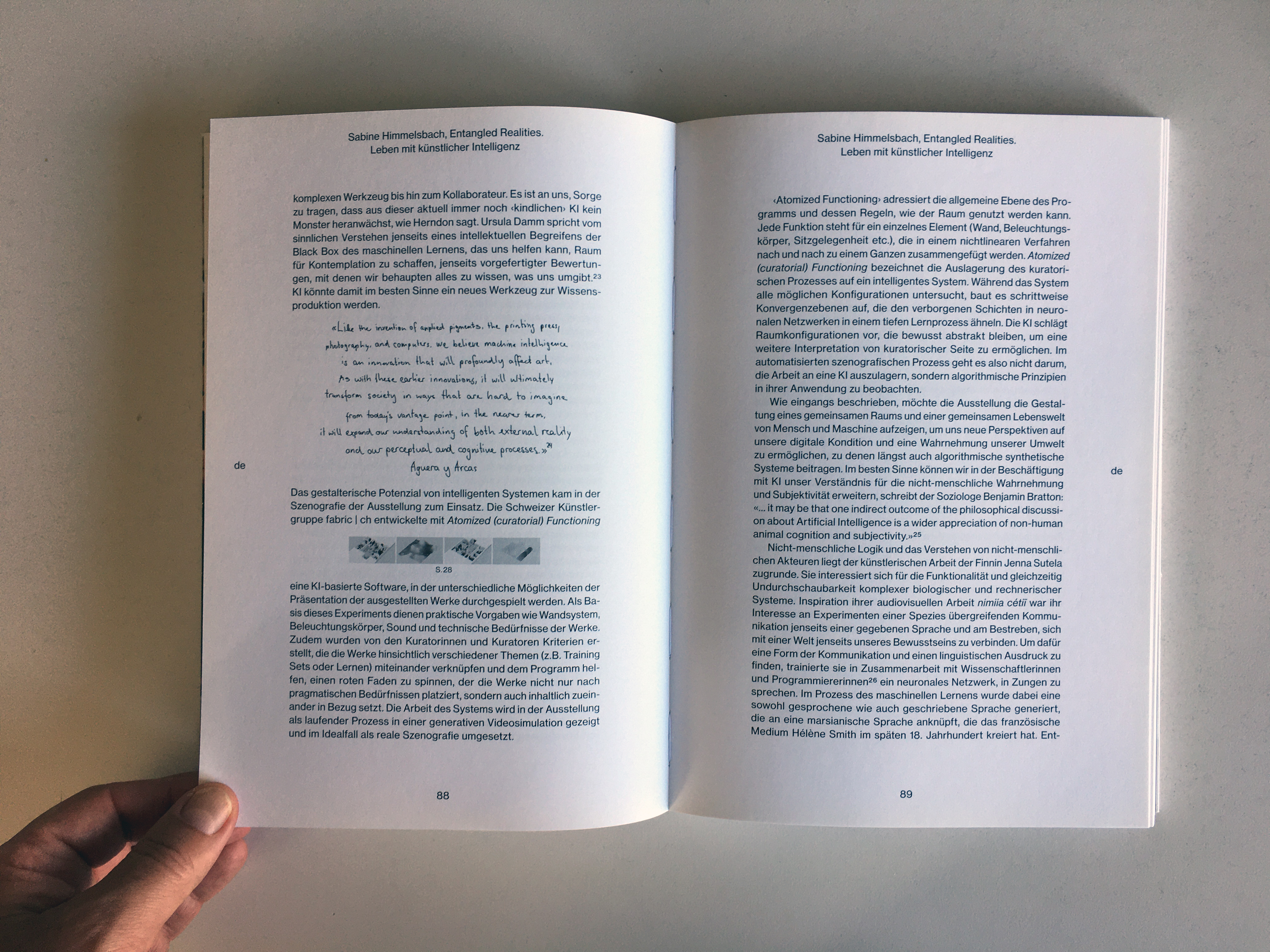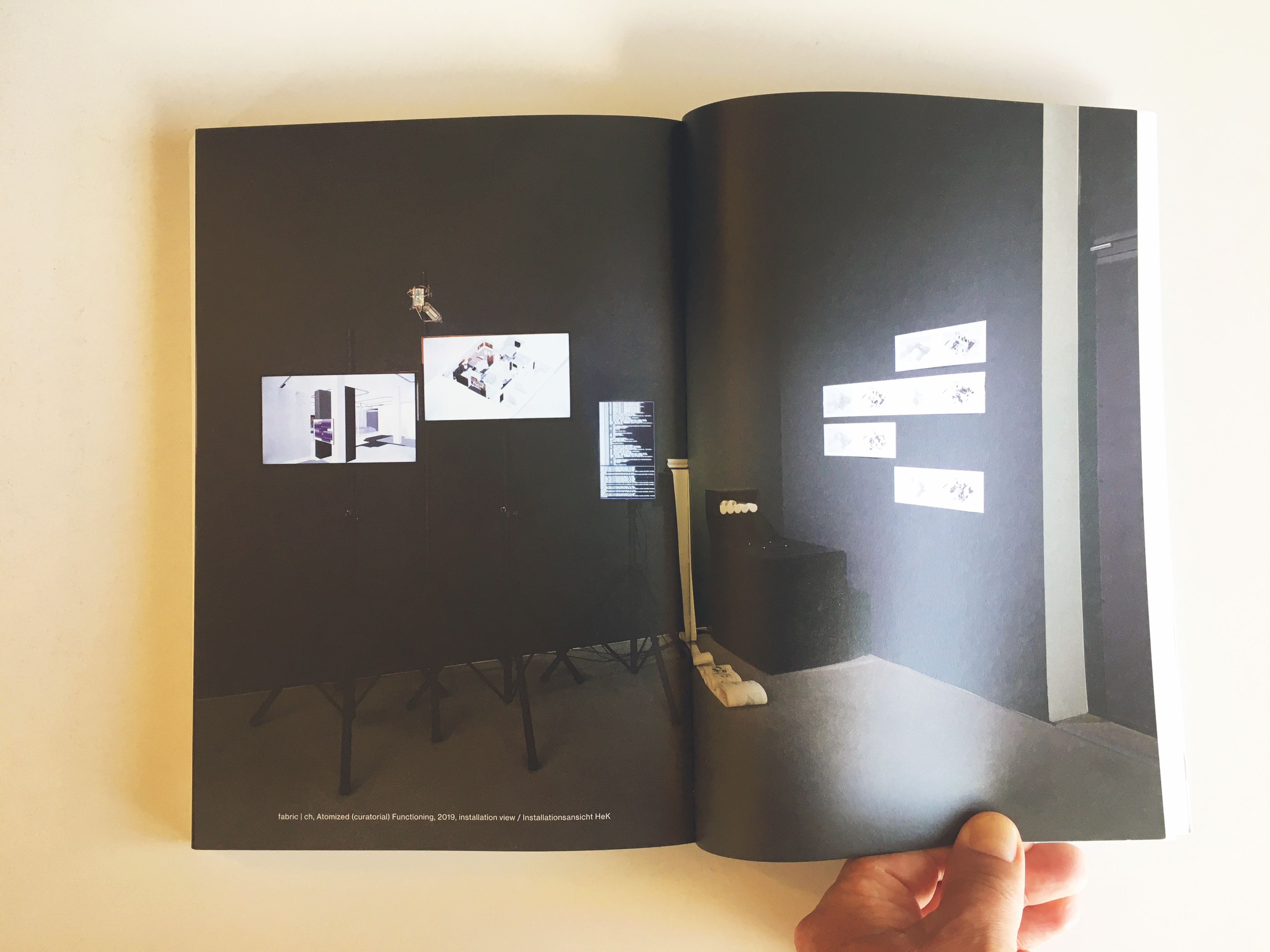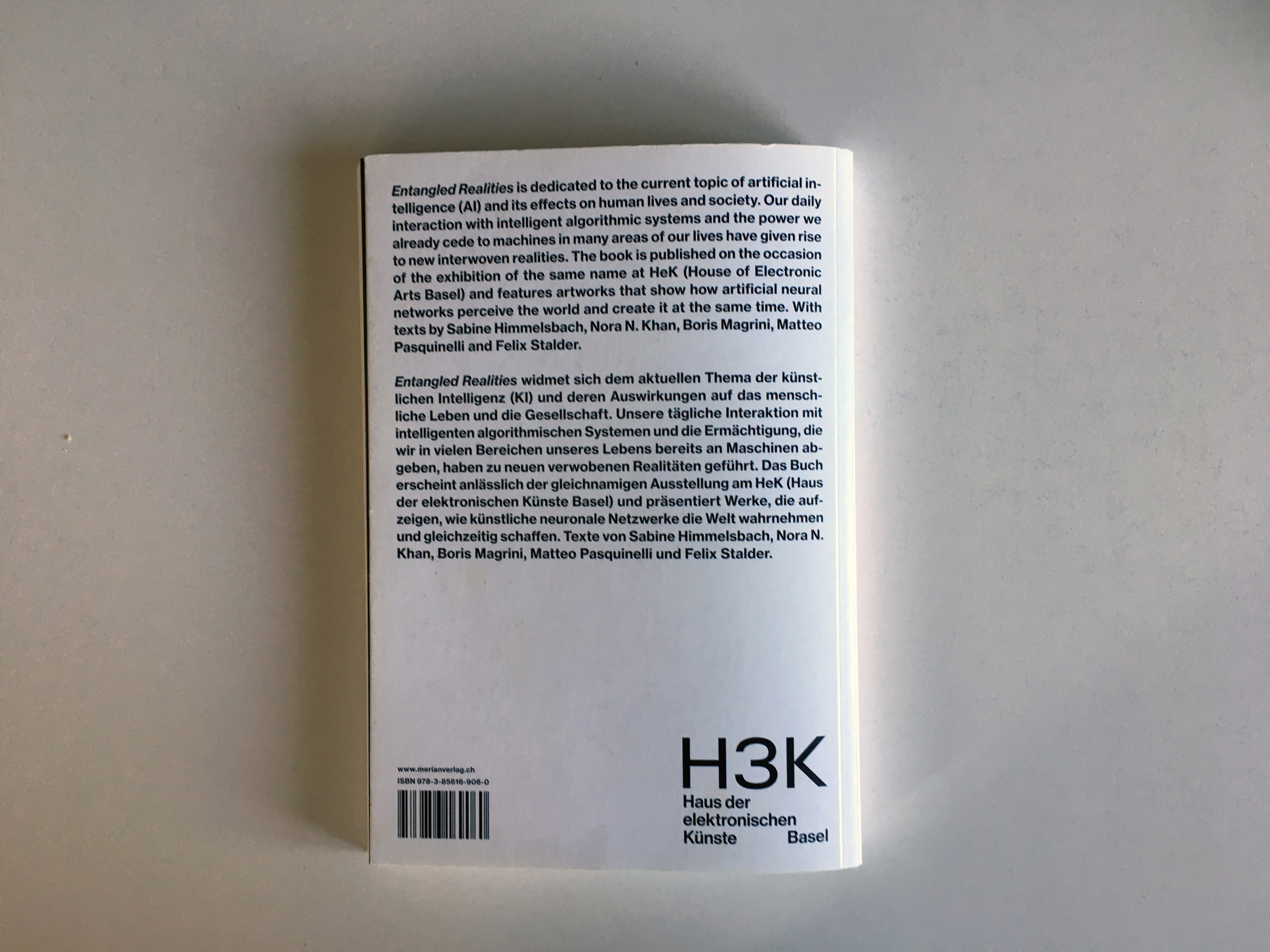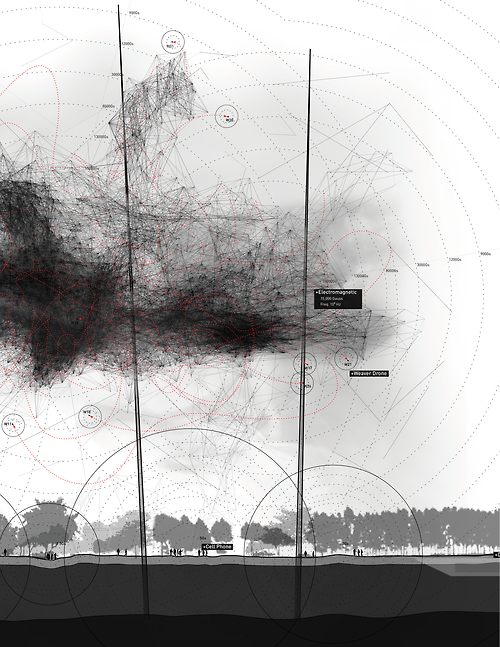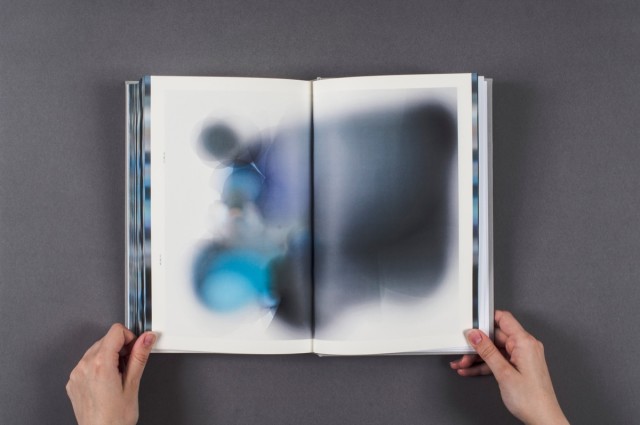Sticky Postings
All 242 fabric | rblg updated tags | #fabric|ch #wandering #reading
By fabric | ch
-----
As we continue to lack a decent search engine on this blog and as we don't use a "tag cloud" ... This post could help navigate through the updated content on | rblg (as of 09.2023), via all its tags!
FIND BELOW ALL THE TAGS THAT CAN BE USED TO NAVIGATE IN THE CONTENTS OF | RBLG BLOG:
(to be seen just below if you're navigating on the blog's html pages or here for rss readers)
--
Note that we had to hit the "pause" button on our reblogging activities a while ago (mainly because we ran out of time, but also because we received complaints from a major image stock company about some images that were displayed on | rblg, an activity that we felt was still "fair use" - we've never made any money or advertised on this site).
Nevertheless, we continue to publish from time to time information on the activities of fabric | ch, or content directly related to its work (documentation).
Monday, May 08. 2023
Creation and Curation with Artificial Intelligence, Swissnex China Blog (Shanghai, 2022) | #talk #fabricch #automated
Note: this was a talk fabric | ch gave online, along with Aiiiii Art Center later last year, in the context of Swissnex Shanghai Art & Science talks.
The online session was moderated by Cissy Sun, Head of Art-Science at Swissnex and the topic was the "hot topic" of the time: "AI" and curation. fabric | ch has recently worked on several experimental or research projects related to this topic, as well as developed in-house tools along the way, and this was an opportunity to explain how we approach this question. In particular by rooting it in architectural thinking and our previous works.
Via Swissnex China
-----
By Cissy Sun
On 6th September, we had an inspiring discussion on curation and artificial intelligence with Mr. Patrick Keller, Architect & Co-founder of fabric | ch - studio for architecture, interaction & research, and Ms. Xi Li, Curator & Director of Aiiiii Art Center.
Mr. Patrick Keller introduced the architecture studio, fabric | ch, where architects and computer scientists work together on a variety of experimental projects that combine architecture, networks, data, and algorithms.
Delving into these projects, Patrick first introduced the work - Platform of Future-Past, which was shown at HOW Art Museum in Shanghai in 2022. “Platform of Future-Past” is an architectural device and monitoring installation, it is equipped in three zones with environmental monitoring devices. The sensors record as much data as possible over time, generated by the continuously changing conditions, presences, and uses in the exhibition space. The data is then stored on Platform Future-Past’s servers and replayed in a loop on its computers. It is a “recorded moment”, “frozen” on the data servers, that could potentially replay itself forever or is waiting for someone to reactivate it. A “data center” on the deck, with its set of interfaces and visualizations screens, lets the visitors-observers follow the ongoing recording process. However, as the exhibition was interrupted by the pandemic, the museum was closed for a few months, and the data from the real exhibition space was very limited. Thus the artists fed the platform the prepared data to generate the moving images. With the touch on artificial data, Patrick reminded us to think about massive ways to treat datasets while talking about artificial intelligence.

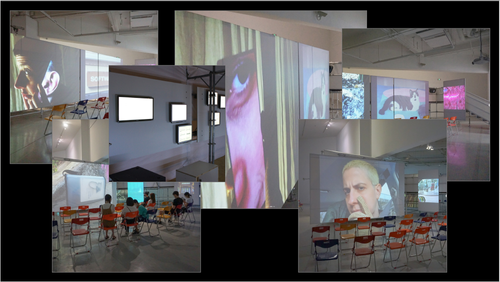
Platform of Future-Past, fabric | ch, 2022
The practice of using networks, data, and algorithms led the artists to develop a systematic approach to combining digital information with physical elements according to certain rules. Furthermore, such practices brought the artists to the exhibitions and curation projects. In the context of Entangled Realities, Living with Artificial Intelligence at the House of Electronic Arts (Basel), 2019, fabric | ch developed the work of Atomized (curatorial) Functioning (A(*)F), which was later also exhibited during Art and Science in the Age of Artificial Intelligence at the National Museum of China (Beijing), 2019.
A(*)F is an architectural project based on automated algorithmic principles, to which a machine learning layer can be added as required. It is a software piece that endlessly creates and saves new spatial configurations for a given situation, converges towards a “solution”, in real-time 3d and according to dynamic data and constraints. During the exhibition at HeK, the sensors collected data both from the artworks and the physical environment, including the walls and the lighting. The information collected by the sensors mapped out the space and helped the curators to organize the exhibition flows.

Atomized (curatorial) Functioning, fabric | ch, 2019
As an ending note, Patrick shared with us the ongoing research project between fabric | ch, the Nam June Paik Art Center (Yongin, South Korea), and ECAL / University of Art and Design, Lausanne (HES-SO), on "viewing rooms" and "digital exhibitions". The research is to give access to the collection of the art center in new ways and forms, out of the physical museum and through digital means. In addition to the research project, fabric | ch is also working on a new project about the digital presentation of the past exhibitions at ZKM (Center for Art and Media, Karlsruhe), the exhibition is planned to open at ZKM at the end of the year.

Ongoing project by fabric | ch
The International Conference on AI Art was co-organized by the Aiiiii Art Center and the Art and Artificial Intelligence Lab of Tongji University. With the theme of “AI and Authorship” (2021) and “Artificial Imagination” (2022), the conference combines the most radical of research from a diverse international curation of fields ranging from art, design, computational science, cultural critique as well as political philosophy. This network is established to pioneer and push the boundaries of artificial intelligence and creative production.
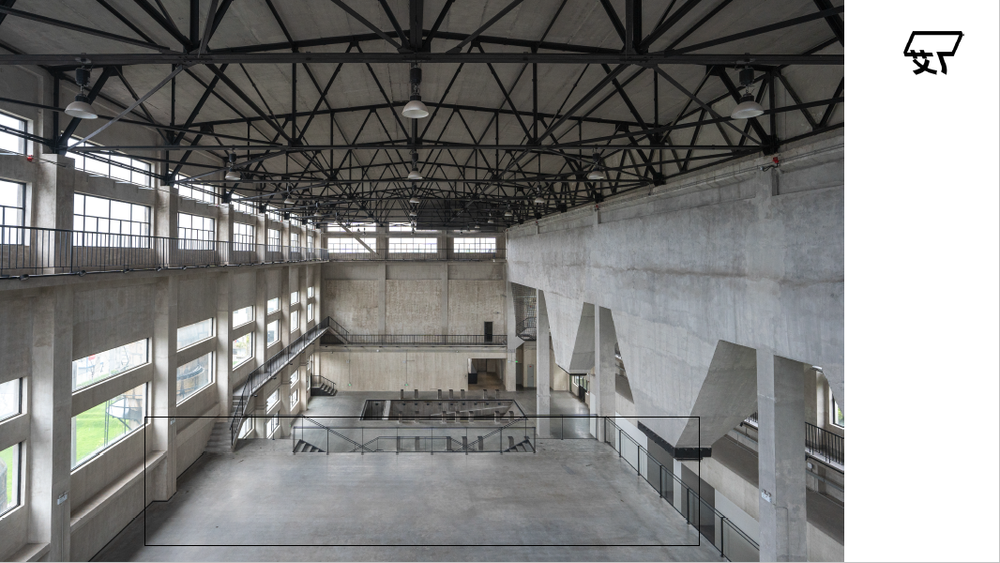
Exhibition space of Aiiiii Art Center
While looking at the exhibition space, two questions came to Xi’s mind: how to physicalize the digital artwork into the space and how to visualize AI art. The two questions lead Xi and her team to the curation concept of the Book of Sand. She chose literature to narrate the exhibition to catch the public attention and tell a good story of AI art. The exhibition starts by employing literary imagination to juxtapose seemingly infinite, random generative art and Borges’ “Book of Sand”, a book that possesses neither a beginning nor an end, just like sand. A book in which “I”, the subject, can turn the pages but cannot predict the outcome, just as we cannot fully comprehend the operational logic of the “black box” embedded by and into a neural network. Against the joy of possessing the book grows the fear that the book is not really infinite, just as we fear that the infinite productivity of AI will make us its captives, as well as the fear that its “infinite creativity” is simply the outcome of intelligent permutations of existing human ideas.

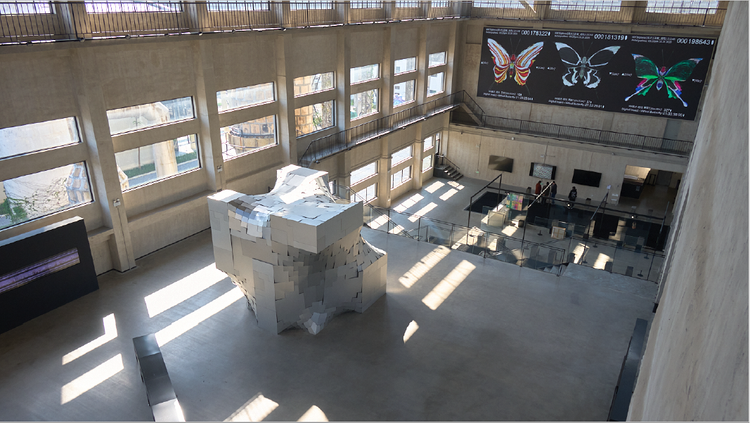
Artificial Remnants, Entangled Others Studio (left) & The Mind Scrap, Certain Measures (right)
“The Book of Sand” is an exhibition done by the joint efforts of machines and humans — the output of the machines interferes with human curatorial and artistic practices. By showcasing the works of Jake Elwes and Dabeiyuzhou, Xi explained further how they worked with the artists to turn web-based artwork into spatial installations.


The ZIZI Show, Jake Elwes (left) & Text Gene Project, Dabeiyuzhou (right)
It is inevitable to talk about what AI art is and who the author is when curating the programs and research projects at Aiiiii Art Center. However, such questions are not at the core of their curatorial practice but to discover the potential of AI itself and deliver the message appropriately to the target audience. With the involvement of machines in the creation and curation process, the question of the role of the machine became a challenging topic. Moreover, it also leads us to think – is there have to be a curator/creator’s name in the exhibition?
Responding to Xi’s question, Patrick pointed out that there are different cases dealing with the question. Taking their own practices, for example, the algorithm is at the core of their work. With the help of AI, the artists could dig deeper into their works, but the concept and the way of working are developed by the collective over years of research and practice. It is important to have their names in the exhibition as they are the creators of the work. Nevertheless, it might be challenging to define the creator for other works using open-source software and text-image software. However, in Patrick’s view, any machine learning program is fed with a huge dataset, without this, the algorithms could not do anything. The things the machines are trained to do and how they are trained to make it essential to define the creator.
Tuesday, October 05. 2021
"Automation algorithmiques et créolisations", revue Espace (Montréal, 2020) | #publications #AI #algorithms #automated
Note: an interview about the implications of AI in art and the work of fabric | ch in particular, between Nathalie Bachand (writer & independant curator), Christophe Guignard and myself (both fabric | ch). The exchange happened in the context of a publication in the art magazine Espace, it was fruitful and we had the opportunity to develop on recent projects, like the "Atomized" serie of architectural works that will continue to evolve, as well as our monographic exhibition at Kunshalle Éphémère, entitled Environmental Devices (1997 - 2017).
-----
By fabric | ch
Tuesday, August 31. 2021
Entangled Realities, HeK exhibition catalogue (eds. S. Himmelsbach & B. Magrini), C. Merian Verlag (Basel, 2021) | #AI #art #environments
Note: this publication was released at the occasion of the exhibition Entangled Realities - Living with Artificial Intelligence, curated by Sabine Himmelsbach & Boris Magrini at Haus der elektronischen Künste, in Basel.
The project Atomized (curatorial) Functioning (pdf), part of the Atomized (*) Functioning serie, was presented, used and debatedi n this context.
-----
By Patrick Keller
Friday, March 09. 2018
The Generator Project | #smart? #protosmart #architecture
Note: a proto-smart-architecture project by Cedric Price dating back from the 70ies, which sounds much more intersting than almost all contemporary smart architecture/cities proposals.
These lattest being in most cases glued into highly functional approaches driven by the "paths of less resistance-frictions", supported if not financed by data-hungry corporations. That's not a desirable future to my point of view.
"(...). If not changed, the building would have become “bored” and proposed alternative arrangements for evaluation (...)"
Via Interactive Architecture Lab (at the Bartlett)
-----

Cedric Price’s proposal for the Gilman Corporation was a series of relocatable structures on a permanent grid of foundation pads on a site in Florida.
Cedric Price asked John and Julia Frazer to work as computer consultants for this project. They produced a computer program to organize the layout of the site in response to changing requirements, and in addition suggested that a single-chip microprocessor should be embedded in every component of the building, to make it the controlling processor.
This would result in an “intelligent” building which controlled its own organisation in response to use. If not changed, the building would have become “bored” and proposed alternative arrangements for evaluation, learning how to improve its own evaluation, learning how to improve its own organisation on the basis of this experience.

The Brief
Generator (1976-79) sought to create conditions for shifting, changing personal interactions in a reconfigurable and responsive architectural project.
It followed this open-ended brief:
"A building which will not contradict, but enhance, the feeling of being in the middle of nowhere; has to be accessible to the public as well as to private guests; has to create a feeling of seclusion conducive to creative impulses, yet…accommodate audiences; has to respect the wildness of the environment while accommodating a grand piano; has to respect the continuity of the history of the place while being innovative."
The proposal consisted of an orthogonal grid of foundation bases, tracks and linear drains, in which a mobile crane could place a kit of parts comprised of cubical module enclosures and infill components (i.e. timber frames to be filled with modular components raging from movable cladding wall panels to furniture, services and fittings), screening posts, decks and circulation components (i.e. walkways on the ground level and suspended at roof level) in multiple arrangements.
When Cedric Price approached John and Julia Frazer he wrote:
"The whole intention of the project is to create an architecture sufficiently responsive to the making of a change of mind constructively pleasurable."

Generator Project
They proposed four programs that would use input from sensors attached to Generator’s components: the first three provided a “perpetual architect” drawing program that held the data and rules for Generator’s design; an inventory program that offered feedback on utilisation; an interface for “interactive interrogation” that let users model and prototype Generator’s layout before committing the design.
The powerful and curious boredom program served to provoke Generator’s users. “In the event of the site not being re-organized or changed for some time the computer starts generating unsolicited plans and improvements,” the Frazers wrote. These plans would then be handed off to Factor, the mobile crane operator, who would move the cubes and other elements of Generator. “In a sense the building can be described as being literally ‘intelligent’,” wrote John Frazer—Generator “should have a mind of its own.” It would not only challenge its users, facilitators, architect and programmer—it would challenge itself.
The Frazers’ research and techniques
The first proposal, associated with a level of ‘interactive’ relationship between ‘architect/machine’, would assist in drawing and with the production of additional information, somewhat implicit in the other parallel developments/ proposals.
The second proposal, related to the level of ‘interactive/semiautomatic’ relationship of ‘client–user/machine’, was ‘a perpetual architect for carrying out instructions from the Polorizer’ and for providing, for instance, operative drawings to the crane operator/driver; and the third proposal consisted of a ‘[. . .] scheduling and inventory package for the Factor [. . .] it could act as a perpetual functional critic or commentator.’
The fourth proposal, relating to the third level of relationship, enabled the permanent actions of the users, while the fifth proposal consisted of a ‘morphogenetic program which takes suggested activities and arranges the elements on the site to meet the requirements in accordance with a set of rules.’
Finally, the last proposal was [. . .] an extension [. . .] to generate unsolicited plans, improvements and modifications in response to users’ comments, records of activities, or even by building in a boredom concept so that the site starts to make proposals about rearrangements of itself if no changes are made. The program could be heuristic and improve its own strategies for site organisation on the basis of experience and feedback of user response.

Self Builder Kit and the Cal Build Kit, Working Models
In a certain way, the idea of a computational aid in the Generator project also acknowledged and intended to promote some degree of unpredictability. Generator, even if unbuilt, had acquired a notable position as the first intelligent building project. Cedric Price and the Frazers´ collaboration constituted an outstanding exchange between architecture and computational systems. The Generator experience explored the impact of the new techno-cultural order of the Information Society in terms of participatory design and responsive building. At an early date, it took responsiveness further; and postulates like those behind the Generator, where the influence of new computational technologies reaches the level of experience and an aesthetics of interactivity, seems interesting and productive.
Resources
- John Frazer, An Evolutionary Architecture, Architectural Association Publications, London 1995. http://www.aaschool.ac.uk/publications/ea/exhibition.html
- Frazer to C. Price, (Letter mentioning ‘Second thoughts but using the same classification system as before’), 11 January 1979. Generator document folio DR1995:0280:65 5/5, Cedric Price Archives (Montreal: Canadian Centre for Architecture).
Monday, December 21. 2015
Gramazio Kohler celebrates 10 years of research in digital fabrication at ETHZ in a video | #digitalfabrication #researchbydesign
-----
One decade of Gramazio Kohler Research at ETH Zurich – The Architecture of Digital Fabrication from Gramazio Kohler Research on Vimeo.
Monday, May 05. 2014
Swarm of drones | #cloud
Thursday, July 04. 2013
Eyes on the Sky – Weather as data paintings by Jed Carter
-----
Eyes on the Sky is a process-based investigation into generative design and the weather linking 64 public-access web cameras across Europe, recording the colour of the sky and producing a book that collects a week of paintings where cameras paint the weather.
Tuesday, July 02. 2013
PURE FLOW by Katy Connor
Via Triangulation
-----
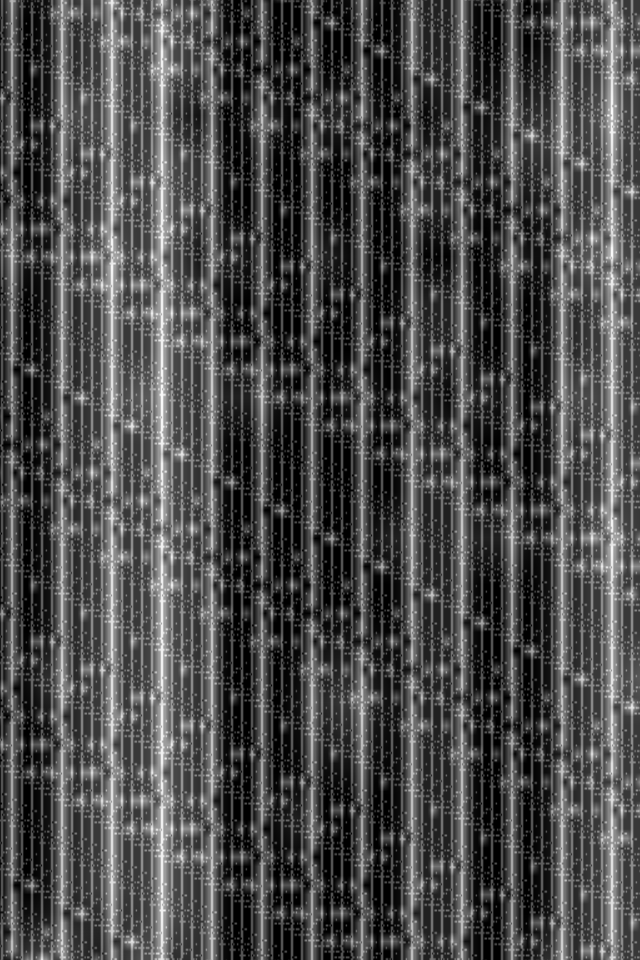
Download it here.
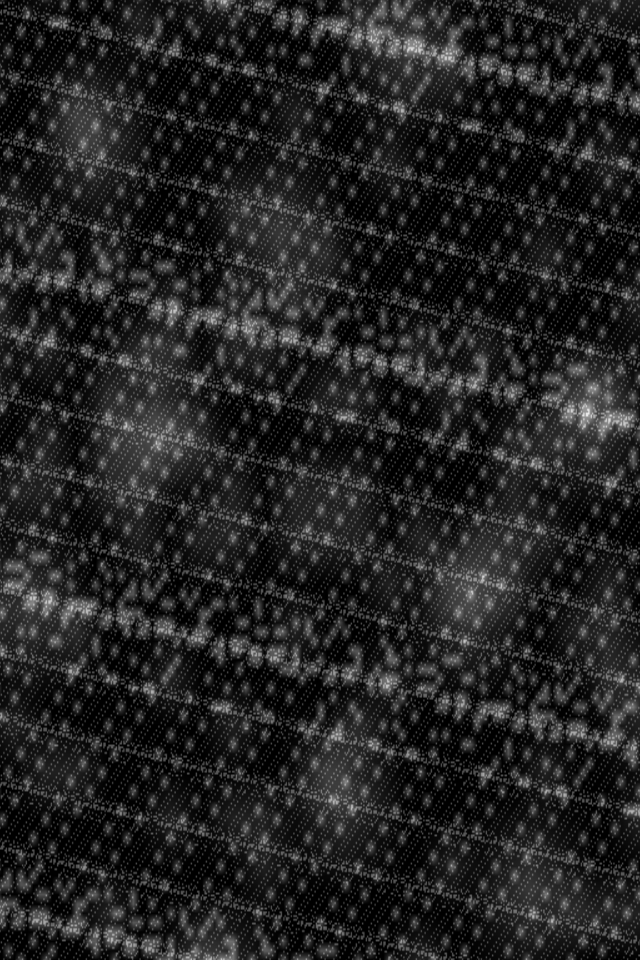

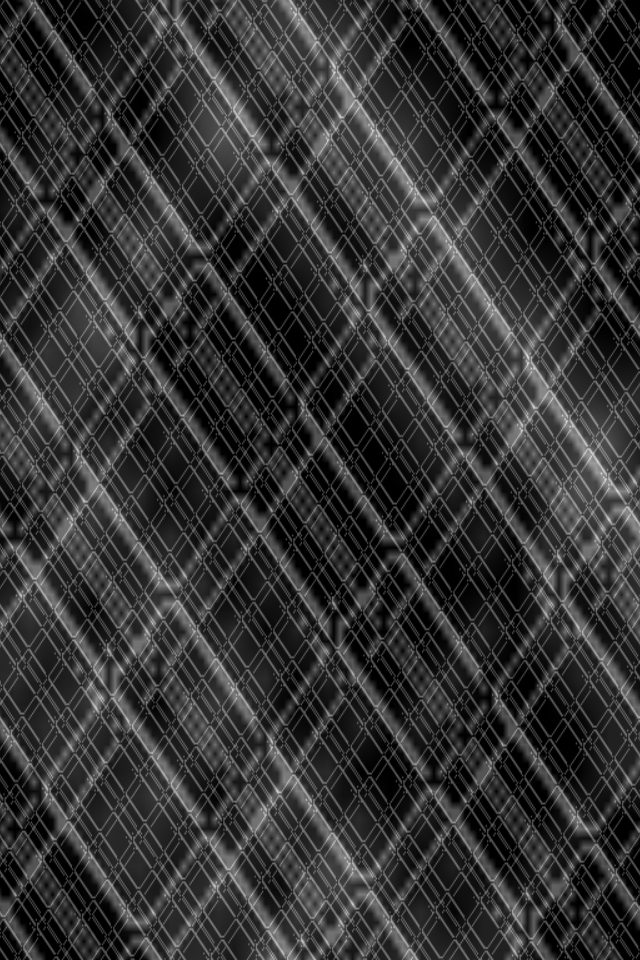

Related Links:
Monday, June 17. 2013
Alive 2013
An interesting conference that will take place at the ETHZ CAAD department next July that I'm fowarding here:
---------------
Via DARCH - ETHZ
By Manuel Kretzer
Dear friends, colleagues and students,
I'm happy to invite you to join us for the - international symposium on adaptive architecture

The full day event will be take place on July 8th, 2013 / 9:00 - 18:00 at the Chair for Computer Aided Architectural Design ETH Zürich-Hönggerberg, HPZ Floor F.
Speakers include: Prof. Ludger Hovestadt (ETH Zürich, CH) | Prof. Philip Beesley (University of Waterloo, CA) | Prof. Kas Oosterhuis (TU Delft, NL) Martina Decker (DeckerYeadon, US) | Claudia Pasquero (ecoLogicStudio, UK) | Manuel Kretzer (ETH Zürich, CH) Tomasz Jaskiewicz (TU Delft, NL) | Jason Bruges (Jason Bruges Studio, UK) | Areti Markopoulou (IAAC, ES) | Ruairi Glynn (UCL, UK) Simon Schleicher (Universität Stuttgart, DE) | John Sarik (Columbia University, US) | Stefan Dulman (Hive Systems, NL)
More info on the speakers, the detailed program, location and registration can be found on the event's website and the attached flyer. www.alive2013.wordpress.com
The symposium is free of charge however registration until July 3rd, 2013 is obligatory. Seats are limited. http://alive13.eventbrite.com
The event is organised by Manuel Kretzer and Tomasz Jaskiewicz, hosted by the Chair for CAAD and supported through the Swiss National Science Foundation.
fabric | rblg
This blog is the survey website of fabric | ch - studio for architecture, interaction and research.
We curate and reblog articles, researches, writings, exhibitions and projects that we notice and find interesting during our everyday practice and readings.
Most articles concern the intertwined fields of architecture, territory, art, interaction design, thinking and science. From time to time, we also publish documentation about our own work and research, immersed among these related resources and inspirations.
This website is used by fabric | ch as archive, references and resources. It is shared with all those interested in the same topics as we are, in the hope that they will also find valuable references and content in it.
Quicksearch
Categories
Calendar
|
|
July '25 | |||||
| Mon | Tue | Wed | Thu | Fri | Sat | Sun |
| 1 | 2 | 3 | 4 | 5 | 6 | |
| 7 | 8 | 9 | 10 | 11 | 12 | 13 |
| 14 | 15 | 16 | 17 | 18 | 19 | 20 |
| 21 | 22 | 23 | 24 | 25 | 26 | 27 |
| 28 | 29 | 30 | 31 | |||
